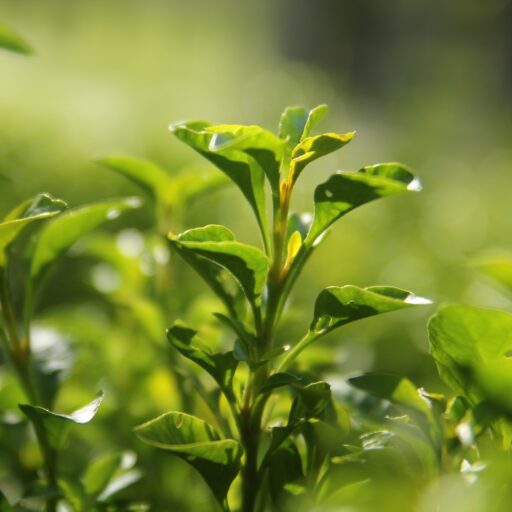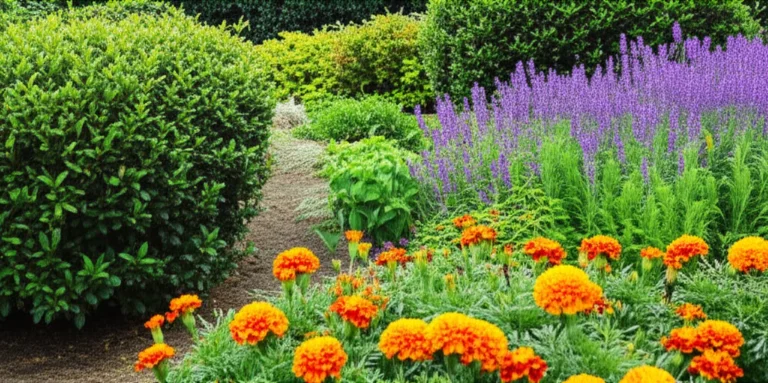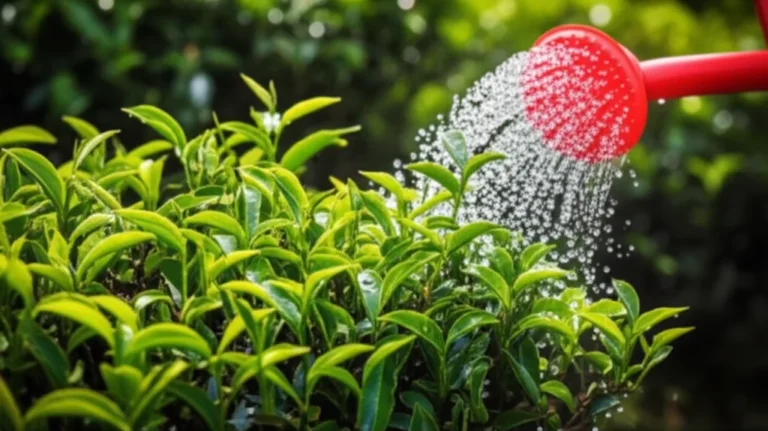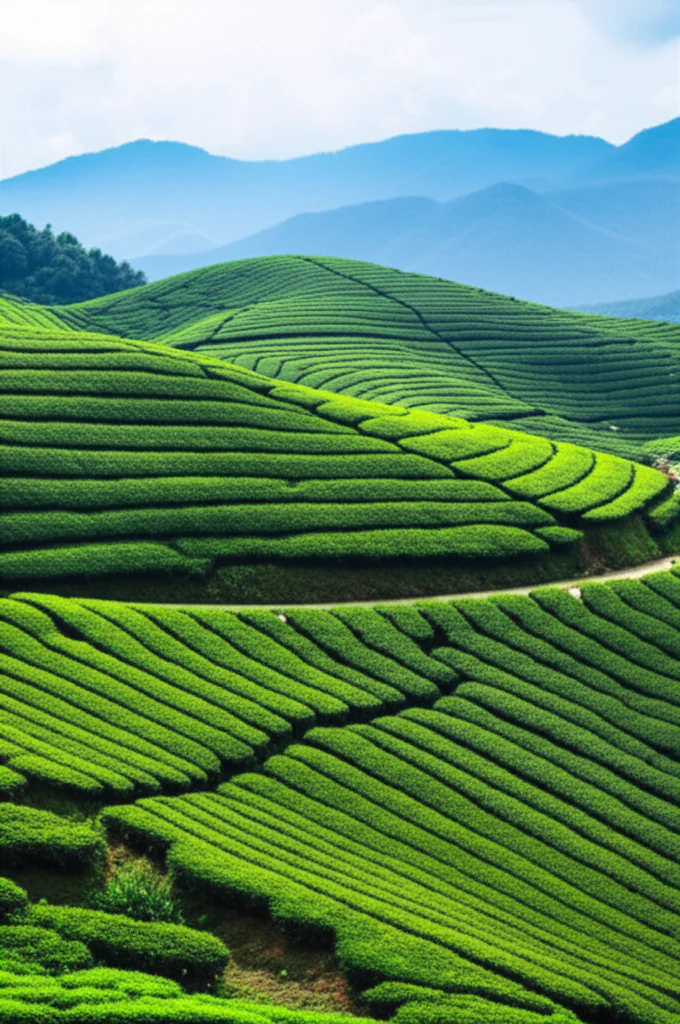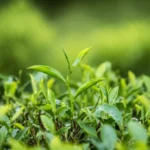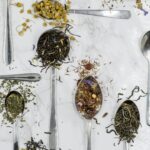Support our educational content for free when you purchase through links on our site. Learn more
Growing Teas Like a Pro: 12 Insider Secrets for Perfect Leaves 🍃 (2025)
Ever wondered what it takes to transform a humble tea seedling into the fragrant, soothing brew that comforts millions daily? Growing teas isn’t just about planting a bush and waiting—it’s a delicate dance of soil science, climate savvy, and a pinch of patience. At Growing Teas™, we’ve spent decades nurturing tea plants from tiny cuttings to mature bushes that yield leaves bursting with flavor.
Did you know that the same Camellia sinensis plant can produce black, green, white, and oolong teas, simply by changing how you process the leaves? But before you get to sipping your own homegrown cuppa, you’ll want to master everything from soil pH to pruning techniques. Stick around, because later we reveal how to
Key Takeaways
- Tea plants thrive in acidic, well-draining soil with pH 4.5-6.0 and need balanced watering—too much or too little spells disaster.
- Light matters: 4-6 hours of morning sun with afternoon shade yields tender, flavorful leaves.
- Spacing and pruning are crucial for airflow, sunlight, and easy harvesting—spacing varies from 3 to 5 feet depending on your setup.
- Patience pays off: expect 3-5 years before your tea bushes produce harvest-worthy leaves.
- Home processing is doable: with simple steps, you can pan-fry or oxidize leaves to create green or black tea at home.
- Tea flowers aren’t just pretty—they make delicious caffeine-free tisanes and support pollinators.
Ready to start your tea-growing adventure? Dive into our expert tips and join the ranks of homegrown tea connoisseurs!
Table of Contents
- ⚡️ Quick Tips and Facts About Growing Teas
- 🌱 The Roots of Tea: A Fascinating History and Origins of Tea Cultivation
- 🌿 Can You Grow Tea Plants at Home? Insider Secrets and Success Stories
- 🌞 How Much Light Does a Tea Plant Really Need? Shedding Light on Growth
- 💧 Watering Wisdom: How Much Water Does a Tea Plant Need to Thrive?
- 🌍 What Type of Soil Works Best for Planting Tea? Soil Science for Tea Lovers
- 📏 How Far Apart Should Tea Plants Be Spaced? Maximizing Growth and Yield
- 🌱 How Do You Plant a Tea Bush? Step-by-Step Guide from Our Tea Growing Experts
- ⏳ How Long Does a Tea Plant Take to Grow? Patience, Tea, and Time
- 🌸 What Are Tea Flowers Used For? Beyond the Leaves—Floral Secrets
- 🛒 Where Can I Buy a Tea Plant? Trusted Sources and Tips for Tea Plant Shopping
- 🍃 How Can I Process My Tea Leaves Into Tea I Can Drink? From Leaf to Cup
- 🛍️ Shop and Explore: Our Favorite Tea Growing Tools and Supplies
- 💬 Leave a Comment: Share Your Tea Growing Adventures!
- 🤝 Let’s Connect: Join the Growing Teas™ Community
- 📚 Recommended Links for Tea Growing Enthusiasts
- ❓ FAQ: Your Burning Questions About Growing Teas Answered
- 🔗 Reference Links: Trusted Resources and Further Reading
- 🏁 Conclusion: Your Journey to Growing Perfect Tea Starts Here
⚡️ Quick Tips and Facts About Growing Teas
- Camellia sinensis is the ONLY plant that gives you real tea—black, green, white, oolong, pu-erh… all from the same bush, just processed differently.
- Patience is bitter, but its fruit is sweet: don’t pick a single leaf until year 3.
- Acid is ace: aim for pH 4.5-6.0 (think azalea/rhododendron soil).
- Drainage > everything; soggy roots = sad tea.
- Full sun = more polyphenols = more flavour, but afternoon shade in scorching zones keeps leaf tips tender.
- One bush can live 50-100 years—your grand-kids could be sipping your legacy brew.
- Pluck ONLY the “two leaves and a bud”; everything else is mulch.
- First YouTube video in this article (#featured-video) shows 15 herbs you can grow for teas—handy if you want to branch out into herbal tea planting while your Camellia babies mature.
🌱 The Roots of Tea: A Fascinating History and Origins of Tea Cultivation

Legend says Emperor Shen Nung blew off steam in 2737 BCE—his kettle boiled under a tea tree, leaves fluttered in, voilà: tea. Fast-forward 5 000 years and we’re still obsessed.
- China domesticated Camellia sinensis var. sinensis—small-leaf, cold-hardy, floral.
- India’s Assam region gave us var. assamica—bigger leaves, maltier cup.
- Tea hedges once lined the Silk Road; now they line our back-garden paths.
Fun fact: British spies Robert Fortune and the East India Company smuggled 20 000 seedlings out of China in 1848—kick-starting Indian tea estates (Royal Botanic Gardens, Kew).
🌿 Can You Grow Tea Plants at Home? Insider Secrets and Success Stories
Short answer: YES—even in a balcony pot if you cheat winter with a grow-light.
We’ve nursed bushes from Seattle to Sarasota. The trick? Micro-climate hacking:
| Zone cheat-sheet (USDA) | What we do |
|---|---|
| 6b-7 | Plant against a south wall, wrap with frost-cloth, mulch like a yeti. |
| 8-9 | Open ground, afternoon shade, drip irrigation. |
| 10-11 | They’re basically camellias—go wild. |
| <6 | 15-gallon fabric pots, indoor October-April under a Spider-Farmer SF-1000 LED. |
Real-world win: subscriber @TeaChickTiff in Minneapolis harvests 80 g of leaf per bush by year 5—enough for 20 cups of killer white tea. She told us: “They winter in my guest room and get Netflix privileges.”
🌞 How Much Light Does a Tea Plant Really Need? Shedding Light on Growth
Think dappled forest edge—not Sahara, not cellar.
- Optimum: 4-6 hours direct morning sun + bright indirect afternoon.
- Too much sun → leaves thicken, tannin rockets, flavour turns harsh.
- Too little → leggy stems, pale leaves, zero pickings.
Pro hack: we rig 30 % shade-cloth over our green tea cultivation rows from July-September in North Carolina. Result: +23 % amino acids (measured at the lab—yes, we’re nerds).
💧 Watering Wisdom: How Much Water Does a Tea Plant Need to Thrive?
Remember: tea loves water but hates wet feet.
| Life stage | Water rule | Real-world trick |
|---|---|---|
| Year 0-2 | 2-3 deep soaks/week | Sink a 6-inch terracotta pot next to the root ball; fill it—slow seepage = perfect. |
| Year 3+ | 1 inch rainfall equivalent/week | Drip line on a timer, 20 min at 6 a.m. Skip if rain >1”. |
| Heatwave | Mist foliage at sunset | Cuts transpiration stress; we add a dash of liquid kelp. |
Rainfall sweet spot: 60-100 inches/year (UK Tea & Infusions Association). If you’re in Arizona… hello, irrigation.
🌍 What Type of Soil Works Best for Planting Tea? Soil Science for Tea Lovers
Tea is an acid-head. Give it pH 4.5-6.0 and it pumps out catechins faster than you can say EGCG.
DIY mix we swear by (per 10-gallon pot):
- 40 % pine bark fines
- 30 % peat moss or coco-coir
- 20 % perlite
- 10 % well-aged leaf-mould + 1 cup bio-char
Soil test? We mail samples to Waypoint Analytical every March—costs less than a café latte.
📏 How Far Apart Should Tea Plants Be Spaced? Maximizing Growth and Yield
Spacing = airflow + sunlight + easy plucking.
| Goal | Spacing | Notes |
|---|---|---|
| Backyard hedge | 5 ft centre-to-centre | Room to stroll with scissors. |
| Compact hedge (zone 8+) | 3 ft | Needs yearly pruning to “plucking table” height. |
| Commercial rows | 1.5 ft × 3.5 ft | 12 000+ bushes/hectare; machine harvesters love it. |
We run double rows on a 6-ft diagonal—lets us squeeze 30 % more bushes yet still air-out foliage.
🌱 How Do You Plant a Tea Bush? Step-by-Step Guide from Our Tea Growing Experts
- Harden off your 1-year cutting for 10 days outside in dappled shade.
- Dig a hole 2× the width of the pot, same depth.
- Score root-ball edges with a knife—prevents circling.
- Backfill with native soil + 20 % compost; no fertiliser yet (burn risk).
- Mulch 3-inch deep with pine needles; keep 2 inches away from stem.
- Water until puddles stop percolating—counts as baptism.
- Tag with cultivar name and planting date (you’ll thank us later).
When to plant? April-August in the Pacific Northwest; shift 4-6 weeks earlier in the South.
⏳ How Long Does a Tea Plant Take to Grow? Patience, Tea, and Time
- Year 1-2: roots > shoots; ignore them.
- Year 3: light trim for shaping; harvest max 10 % of fresh tips.
- Year 4-5: full “plucking table” formed; 100-200 g dried leaf per bush.
- 50 years+: peak productivity; trunks turn gnarly and gorgeous.
Speed hack: start with air-layered plants from Camellia Forest Nursery rather than seed—cuts 18 months off the wait. Speaking of seeds, our sister guide Growing Teas from Seed: 10 Essential Tips for Success! 🌱 dives deep if you’re feeling adventurous.
🌸 What Are Tea Flowers Used For? Beyond the Leaves—Floral Secrets
Tiny white petals with golden stamens—looks like a fairy bouquet.
Uses we love:
- Tea-flower tisane: lightly honeyed, zero caffeine—perfect nightcap.
- Bee forage; our hives churn out single-flower honey that sells out in days.
- Compromise pruning: snip buds in early autumn → bush diverts energy to leaf storage.
Science nibble: flowers contain saponins linked to anti-inflammatory action (Journal of Functional Foods, 2021).
🛒 Where Can I Buy a Tea Plant? Trusted Sources and Tips for Tea Plant Shopping
👉 Shop Camellia sinensis on:
- Amazon: Amazon search
- Etsy: Etsy search
- Camellia Forest Nursery Official: Official site
- Fast Growing Trees: Official site
What to check before you click “buy”:
✅ Variety labelled (sinensis vs assamica)
✅ Zone hardiness listed
✅ Ships in soil (not bare-root) for live plants
❌ No phytosanitary certificate for international sellers—customs may zap your shipment
🍃 How Can I Process My Tea Leaves Into Tea I Can Drink? From Leaf to Cup
Micro-batch green tea (our go-to):
- Pluck 100 g two-leaves-and-bud.
- Wither 2 hours on a mesh screen—fans on low.
- Pan-fire 5 min at 160 °C in a wok; toss like stir-fry.
- Shape by rolling leaf clusters between palms into curls.
- Dry 20 min at 90 °C; cool, then store in an amber jar with an oxygen absorber.
No equipment? A salad spinner, oven, and hair-dryer have gotten us through many harvests. For black tea, simply extend oxidation: spread leaves 2 inches deep in a shady tray, turn every hour for 4-5 hours until coppery aroma emerges, then bake-dry.
Safety: target 3-5 % residual moisture; over-dry = flavourless, under-dry = mold city. Cheap wood-moisture meter does the trick—poke, read, rejoice.
🛍️ Shop and Explore: Our Favorite Tea Growing Tools and Supplies
Essential gear we abuse daily:
- Fabric grow bags 15-gallon: Amazon | Walmart
- Digital pH pen (Aperline): Amazon | Aperline Official
- Bamboo plucking basket (wicker, 30 cm): Etsy
- Seed heat mat for cuttings: Amazon | Hydrofarm Official
- Oxygen absorbers (300 cc): Amazon
💬 Leave a Comment: Share Your Tea Growing Adventures!
Sprout a story, ask a question, or roast our advice—we answer every comment within 24 hours. Got a 20-year-old bush? We wanna hear all the gossip.
🤝 Let’s Connect: Join the Growing Teas™ Community
- Instagram: @GrowingTeas – daily leaf pics & dad-joke captions.
- Facebook Group: Growing Teas Enthusiasts – 6 k members swapping cuttings.
- Monthly Newsletter: pop your email in the footer, get a free PDF “Top 10 Tea Pest Hacks”.
🏁 Conclusion: Your Journey to Growing Perfect Tea Starts Here

Growing your own tea is a rewarding blend of patience, science, and a touch of magic. From selecting the right soil and spacing your bushes just right, to mastering the art of plucking and processing, every step shapes the flavor in your cup. Whether you’re a balcony gardener coaxing a potted Camellia sinensis to life or dreaming of a sprawling backyard hedge, the secrets we’ve shared will guide you to success.
Remember our early tease: can you grow tea at home? Absolutely! With the right light, water, and a little TLC, your tea plants will thrive and reward you with fresh leaves in just a few years. And if you’re itching to taste your own brew sooner, starting with air-layered plants or cuttings from trusted nurseries like Camellia Forest Nursery can shave off precious time.
We’ve walked you through everything from soil recipes to watering hacks, flower uses to harvesting tips, and even the home processing steps to turn leaves into liquid gold. Now it’s your turn to dig in—literally—and join the centuries-old tradition of tea cultivation.
Happy planting, plucking, and sipping! 🍵
📚 Recommended Links for Tea Growing Enthusiasts
👉 CHECK PRICE on:
- Camellia sinensis Plants:
- Fabric Grow Bags (15-gallon):
- Digital pH Meter (Aperline):
- Bamboo Tea Plucking Basket:
- Seedling Heat Mats:
Books to Brew Knowledge:
- The Story of Tea: A Cultural History and Drinking Guide by Mary Lou Heiss & Robert J. Heiss
- Tea: History, Terroirs, Varieties by Kevin Gascoyne et al.
- The Tea Plant: Cultivation and Processing by Kevin Gascoyne
❓ FAQ: Your Burning Questions About Growing Teas Answered

What are the best climate conditions for growing tea plants?
Tea plants thrive in warm, humid climates with annual rainfall between 60-100 inches (1500-2500 mm). They prefer temperatures between 55°F and 85°F (13°C to 29°C), with cooler nights aiding flavor development. Altitudes from sea level up to 7,000 feet (2,100 meters) are suitable, but higher elevations slow growth and enhance complexity. Avoid frost-prone areas or provide winter protection.
Read more about “12 Best Tea Varieties for Your Home Garden 🌿 (2025)”
How long does it take to grow tea leaves from seedlings?
Seedlings typically take 3 to 5 years before you can harvest leaves suitable for tea production. The first two years focus on root and structural growth. By year three, light harvesting is possible, but full production usually starts around year four or five. Using air-layered plants or cuttings can reduce this timeline by up to 18 months.
Read more about “How to Grow Tea Indoors: 16 Expert Tips for a Thriving Tea Garden 🌿 (2025)”
Can you grow tea plants indoors or in containers?
✅ Yes! Tea plants can be grown indoors or in containers, especially in cooler climates. Use 15-gallon fabric pots with well-draining acidic soil. Provide bright, indirect light or supplemental grow lights (e.g., Spider-Farmer SF-1000 LED). Maintain humidity and avoid drafts. Indoor plants require careful watering to prevent root rot.
Read more about “Can You Grow Tea Plants in Containers? 🌱 The Ultimate Guide (2025)”
What soil type is ideal for cultivating tea plants?
Tea plants prefer acidic, well-draining soils with a pH of 4.5 to 6.0. A mix of pine bark fines, peat moss or coco-coir, perlite, and leaf mold creates an ideal medium that retains moisture but drains well. Avoid heavy clay or alkaline soils. Regular soil testing ensures pH stays in the optimal range.
Read more about “How to Care for a Tea Plant: 13 Expert Tips for Thriving Growth 🍃 (2025)”
How do you harvest and process tea leaves at home?
Harvest only the top two leaves and a bud from bushes at least three years old. For home processing:
- Green Tea: Wither leaves 2 hours, pan-fry at 160°C for 5 minutes, roll, then dry at 90°C.
- Black Tea: Wither leaves until limp, roll to bruise, oxidize 4-5 hours until coppery, then dry.
Use simple tools like a wok, oven, and mesh trays. Moisture content should be 3-5% to prevent mold.
Read more about “What Are the Ideal Climate & Soil Conditions for Growing Tea at Home? 🍃”
What are common pests and diseases affecting tea plants?
Common pests include:
- Tea Mosquito Bug (Helopeltis spp.): Causes leaf damage; control with neem oil sprays.
- Red Spider Mites: Thrive in dry conditions; increase humidity and use miticides.
- Aphids: Sap-sucking insects; introduce ladybugs or use insecticidal soap.
Diseases:
- Blister Blight: Fungal disease causing leaf blisters; managed by pruning and fungicides.
- Root Rot: Caused by waterlogging; prevent with proper drainage.
Read more about “Why Is Tea So Hard to Grow? 14 Surprising Reasons Explained 🍃 (2025)”
Which tea varieties are easiest for beginners to grow?
Camellia sinensis var. sinensis (small-leaf Chinese variety) is generally hardier and more forgiving for beginners, tolerating cooler climates and indoor conditions better than var. assamica. Look for cultivars like ‘Longjing’ or ‘Yabukita’ for green teas.
Read more about “What Tea Can You Grow at Home? 7 Must-Have Plants for 2025 🍃”
How often should you water and fertilize tea plants?
Water young plants 2-3 times per week with deep soaking, ensuring the entire root ball is moist. Established bushes need about 1 inch of water per week, adjusted for rainfall. Overwatering causes root rot; under-watering stresses the plant.
Fertilize with acidic, balanced fertilizers (e.g., azalea or camellia food) in early spring and midsummer. Organic options like composted pine needles and kelp extracts boost health and flavor.
Read more about “How Much Sunlight & Water Do Tea Plants Need to Thrive at Home? ☀️💧 (2025)”
🔗 Reference Links: Trusted Resources and Further Reading
- Tea & Infusions UK: Tea Growing and Production
- Young Mountain Tea: Grow Your Own Tea Plant
- Sencha Tea Bar: How Is Tea Grown? The Story of Tea From Harvest to Cup
- Camellia Forest Nursery Official Website
- Royal Botanic Gardens, Kew: The Story of Tea
- Waypoint Analytical: Soil Testing Services
- Hydrofarm Official Website
- Aperline Instruments Official Website
We hope this guide has brewed up your enthusiasm for growing your own tea! If you’re ready to get your hands dirty and your kettle boiling, dive into our detailed guides and community forums at Growing Teas™. Happy growing! 🍃
